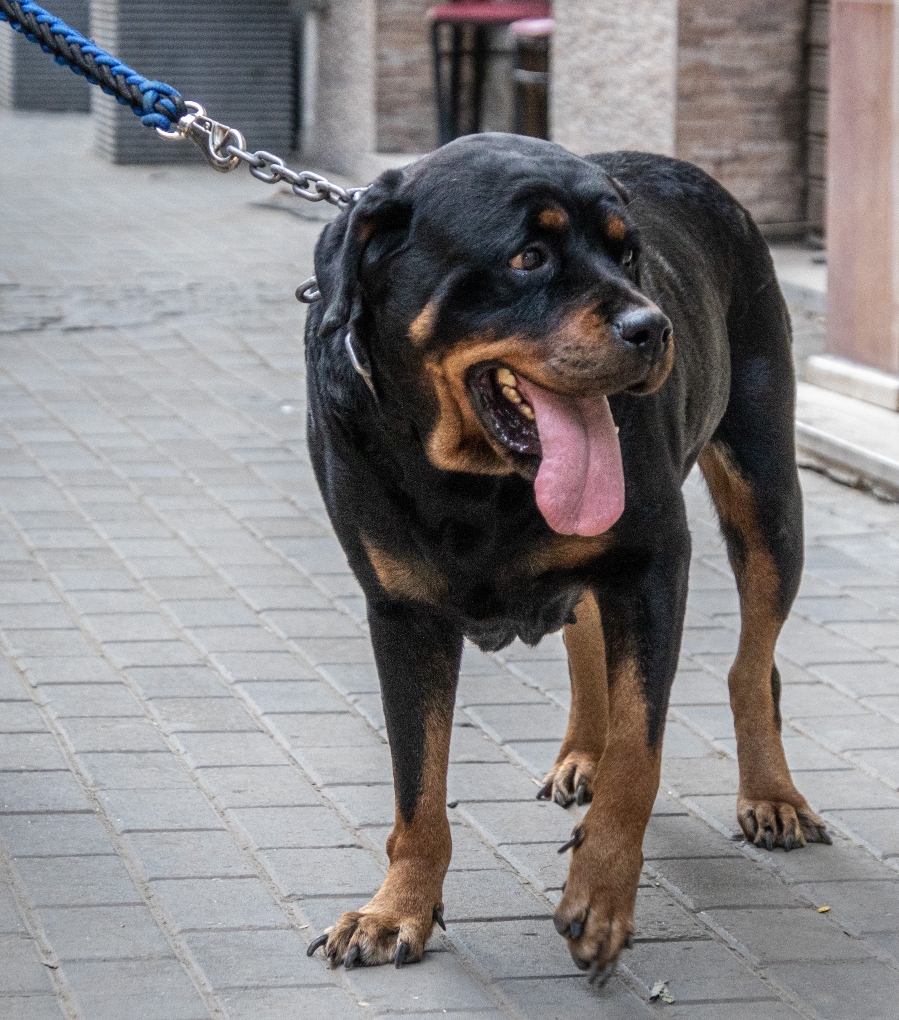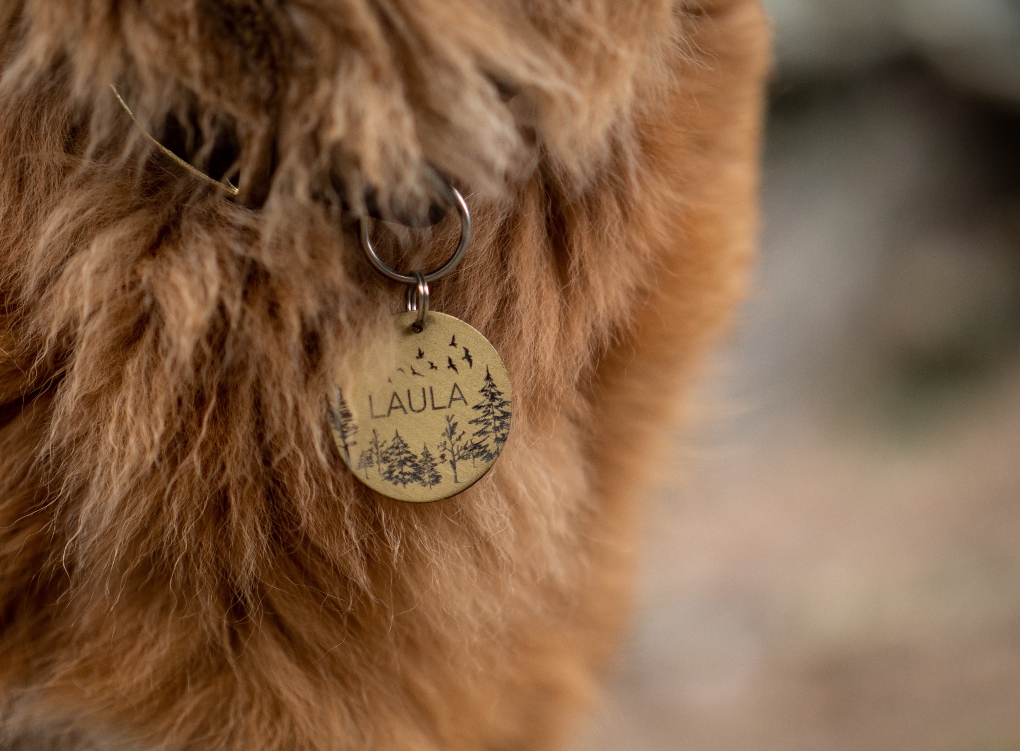Moving to Ireland With a Dog: 23 Absolutely Essential Tips

Moving to Ireland with a dog can seem like a daunting and overwhelming process. The process is much more simple if you can get clear on the steps you will have to follow for your pet and your particular situation.
As a dog mom myself, I know it can be stressful to make sure you are doing the right things so your pet stays comfortable and well-taken care of during a big transition. Here are the 23 essential tips and the steps you will have to take to move to Ireland with your dog.
Jump To…
• Can I Bring My Dog if I Move to Ireland?
• How Long Does a Dog Have to Be In Quarantine for in Ireland?
• How Much Does It Cost When Moving a Dog to Ireland?
• Important Information When Moving to Ireland With a Dog
• Moving to Ireland With a Dog From the European Union
• Moving to Ireland With a Dog From Other Countries (Non-EU)
• Moving to Ireland with Assistance/Service Dogs
• Official Irish Government Website and Contact Information
• Ireland’s Dangerous Dogs List
• Ireland’s Dog Vaccinations and Identification Requirements
Can I Bring My Dog if I Move to Ireland?
Yes, in most situations moving to Ireland with a dog is possible. You will have to follow certain requirements depending on what country you are coming from, which I will outline in this article.
How Long Does a Dog Have to Be In Quarantine for in Ireland?
If your dog is free of tapeworms, has been properly vaccinated and microchipped, and is accompanied by a valid EU pet passport or EU Health certificate, you should not have a problem with having to quarantine your dog.
However, when moving to Ireland with a dog that has not followed the appropriate rules, the dog might be subject to quarantine under official control while the necessary tests or vaccinations are being performed.
How Much Does It Cost When Moving a Dog to Ireland?
Unfortunately, it can be very costly to move to Ireland with a dog. You will need to factor in all elements such as veterinarian visits, vaccinations, microchipping, and tests as well as the actual travel costs and any documentation.
The cost of moving to Ireland with a dog will likely start around $2,000 USD and potentially go up from there, depending on your situation and the cost of living where you are coming from.

Important Information When Moving to Ireland With a Dog
1. Your pet must arrive in Ireland with you.
Or if it is accompanied by a person authorized by you, your dog will need to arrive in Ireland within five days before or after you travel.
2. Your pet must be accompanied by original paperwork, copies are not allowed.
3. The maximum number of animals allowed to travel to Ireland with you is FIVE.
These pet travel rules apply no matter which country you are traveling from. The only exception is if you are bringing more than 5 dogs to Ireland for a dog show or competition. In this case, you will need to provide written confirmation to livetrade@agriculture.gov.ie.

4. If you are buying a dog or other pet abroad and shipping it to Ireland, your pet can not enter Ireland on the typical rules.
Under Ireland’s pet travel rules, if you are going to ship a pet to Ireland and you are not going to collect it and travel home with it you will have to follow a different set of travel rules.
Check here for more information.
5. The same applies if you intend to buy, sell or gift a dog in Ireland.
If there will be any change of ownership involved after your arrival in Ireland, including delivery of a purchased or rehomed animal, you will need to follow the special rules as outlined in the above link.
6. Each individual airline decides whether to carry a dog in the cabin or as excess baggage.
The Irish Department of Agriculture, Food, and Marine does not have a say in this decision.
Many airlines do not fly “dangerous dogs” and most airlines have a carrier dimension and weight maximum for dogs allowed in the cabin.
❗7. Your dog might be refused entry into Ireland or placed into quarantine if you do not follow the appropriate rules and meet the required compliance checks.
Moving to Ireland With a Dog From the European Union
These next set of rules applies to any person moving to Ireland with their pet dog (cat or ferret) from an EU Member State including Andorra, Gibraltar, Greenland, the Faroe Islands, Iceland, Liechtenstein, Monaco, Northern Ireland, Norway, San Marino, Switzerland, and the Vatican City.

Your dog will NOT be required to quarantine when entering Ireland during the move IF…
a. Your dog has been microchipped.
The microchip must be inserted FIRST before the dog receives their rabies vaccination. The microchip must be readable by a device compatible with ISO standard 11785.
However, you may bring your own microchip scanner, OR if your pet has a different type of microchip, your vet will be able to remove it and replace it with a chip that is compatible with the EU microchip readers.
b. Your dog has a valid rabies vaccination.
The vaccination must be given after the microchip is inserted and your pet must be at least 12 weeks old before the vaccination is given. Vaccinations must be given by your veterinarian.
Before moving your dog to Ireland, you must wait until the rabies immunity has developed.
The vaccination datasheet will state how long you must wait for immunity to develop, most often it will be between 21 to 30 days. The vet that administers your dog’s vaccine will be able to let you know how long to wait.
A rabies vaccination with either a 1 or 3-year validity period is acceptable for moving a dog to Ireland.
c. Your dog has a valid EU pet passport.
1. Ireland accepts pet passports from all EU countries.
A valid pet passport is one that is issued by an EU country or territory which certifies that the rabies vaccine given to the dog is valid.
2. Your dog will need a valid EU Health Certificate if it does not have an EU pet passport.

3. Vets in countries outside of the EU are not allowed to complete, sign, or stamp the section for rabies vaccination in the passport.
If they do, the pet passport will become invalid for travel into the EU. For those from other countries, you will need to acquire the EU Health Certificate instead.
4. An EU health certificate must be:
a. Completed by your Veterinarian, AND
b. Signed and endorsed by an Official Veterinarian of the country of departure, within 10 days of the dog’s arrival into the EU, AND
c. Upon arriving into the EU, it will need to be immediately signed and endorsed by the EU country which performs the compliance checks (Ireland in this case).
NOTE: An Offical Veterinarian in this case is a State Veterinarian directly employed by the government from which you are departing (your home country).
5. If you are traveling to Ireland by sea, the validity is extended by the number of sea travel days.

6. Your dog’s EU Health Certificate is valid for travel around the EU for up to 4 months, or until the anti-rabies vaccination expires, whichever comes first.
7. If you are moving a dog to Ireland from any country besides Finland, Malta, Northern Ireland or Norway, a veterinarian must treat your dog for tapeworm.
The treatment will need to be recorded in the dog’s pet passport or EU health certificate each time you travel to Ireland.
The treatment MUST:
- Contain praziquantel.
- Be administered by a veterinarian.
- Be administered no less than 24 hours (1 day) and no more than 120 hours (5 days) before the dog’s scheduled arrival time in Ireland.
8. Dogs entering from EU countries may enter Ireland through any port or airport.
Moving to Ireland With a Dog From Other Countries
For dogs moving to Ireland from MOST other countries outside of the EU, they will need to follow these rules.

Your pet dog will be allowed entry to Ireland and will NOT be required to quarantine IF…
a. Your dog has been microchipped
The microchip must be inserted FIRST before the dog receives their rabies vaccination. The microchip must be readable by a device compatible with ISO standard 11785.
However, you may bring your own microchip scanner, OR if your pet has a different type of microchip, your vet will be able to remove it and replace it with a chip that is compatible with the EU microchip readers.
b. Your dog has a valid rabies vaccination.
The vaccination must be given after the microchip is inserted and your pet must be at least 12 weeks old before the vaccination is given. Vaccinations must be given by your vet.
As is the same with dogs moving to Ireland from the EU, your dog must wait until the rabies immunity has fully developed and a rabies vaccination with a 1 or 3-year validity is acceptable for the move to Ireland.
c. Your dog carries a valid EU pet passport or EU Health Certificate (see above information).
d. Your dog has been administered tapeworm treatment.
The tapeworm treatment will need to be recorded in the dog’s pet passport or EU health certificate before each time you travel to Ireland.
The treatment MUST:
- Contain praziquantel.
- Be administered by a veterinarian.
- Be administered no less than 24 hours (1 day) and no more than 120 hours (5 days) before the dog’s scheduled arrival time in Ireland.

2. To enter Ireland from outside of the EU, you must give advance notice that you will be bringing your pet dog into Ireland.
3. You will need to arrange in advance to have a pet compliance check carried out on upon your arrival to Ireland.
You will not be allowed to leave the airport or port of entry (besides an emergency) before your compliance checks are carried out.
This does not apply if you are arriving from an EU country. However, if you have traveled through another EU country on your way to Ireland and have NOT received a compliance check, you will still need to complete one upon your pet’s arrival to Ireland.
4. Dogs moving to Ireland from outside of the EU will have to pay a fee for compliance checks.
There is no charge for compliance checks on pets entering from Great Britain or for guide dogs.
5. Compliance checks will typically be performed upon arrival to Ireland at the port or airport.
6. Pets from non-EU countries may only enter Ireland through:
• Dublin Airport – advance notice can be emailed to: petmove@agriculture.gov.ie
• Cork Airport – corkpetmove@agriculture.gov.ie
• Shannon Airport – petsshannon@agriculture.gov.ie
• Dublin Port – dubport.petmove@agriculture.gov.ie
• (Cork) Ringaskiddy Port – corkpetmove@agriculture.gov.ie
• Rosslare Ferry Europort – europort@agriculture.gov.ie
Moving to Ireland with Service or Assistance Dogs

1. Airlines operating within the EU must allow recognised assistance dogs in the cabin of the plane.
This includes disabled passengers and passengers with reduced mobility. All dogs traveling in a cabin of an aircraft must still be compliant with the rules for entering Ireland (outlined above).
2. It is up to the airline to decide if they will allow dogs providing other types of services (such as emotional support animals) to accompany passengers in the cabin of the airplane.
You may have to work with your airline to provide proper verification of your service animal.
3. When moving to or travelling from a non-EU country, you will be required to provide 24 hour (prior to departure time) advance notice of your intention to bring your service dog into Ireland.
For further information on moving to Ireland with your dog, you can check the official website for Ireland’s pet travel.
Or, submit any questions here:
Email: livetrade@agriculture.gov.ie
• Telephone from within Ireland: 01 607 2827
• Telephone from outside of Ireland: 00353 1 6072827
Are There Any Other Restrictions for Moving to Ireland With My Dog?
Ireland’s Dangerous Dogs List
No dog breeds are banned in Ireland. However, there are a few breeds that are restricted and will have to follow extra rules in Ireland.
The dog breeds on the restricted list are:
- American Pit Bull Terrier
- English Bull Terrier
- Staffordshire Bull Terrier
- Bull Mastiff
- Dobermann Pinscher
- Rottweiler
- German Shepherd (Alsatian)
- Rhodesian Ridgeback
- Japanese Akita
- Japanese Tosa
- Ban dog – any cross of the above breeds or any strain of the above listed dogs.

The restrictions these breeds have to follow are:
- Only people over the age of 16 are allowed to handle these dogs.
- These dogs are required to be muzzled in public.
- These dogs are required to be on a short (less than 2 metres/6.6 foot) lead. The leash must either be ‘sufficiently strong’ or a chain.
- At all times the dog must wear a collar with the owner’s information on it. This information should include owner’s name & address.
Ireland’s Dog Vaccinations and Identification Requirements
Dog Licensing:
All dogs over 4 months of age are required to have a license in Ireland. If you are moving to Ireland with a dog and it is going to be staying for more than 30 days then it will need to be licensed.
You can purchase an annual (€20) or lifetime (€140) license for your dog at your local Post Office or buy one online at licences.ie and will be issued by post within 10 working days.
Dog Identification:
Your dog must wear a collar with its accurate name and address. Make sure to update the information upon moving to Ireland. You will also need to have your dog microchipped (as outlined above).

Dog Vaccination:
Dogs in Ireland need to be vaccinated against distemper, hepatitis, parvovirus, leptospirosis, and kennel cough.
Puppies should get vaccinated between 6 to 9 weeks of age and then again at 10 to 12 weeks. Dogs are not considered fully protected until after their second vaccination. Up until this point, they should remain at home to keep them safe from catching a disease.
You will likely need regular ‘booster’ vaccinations to keep your dog immunized and safe against disease. Ask your veterinarian how often your dog will need to be vaccinated.

Making any big move can come with its challenges, especially when it comes to moving abroad and moving your dog to Ireland. Follow the steps outlined above and check the Irish government’s website to stay up to date with the latest requirements and regulations for making the move with your furry friend!
Looking for resources to use for your next trip or move abroad?
CLICK HERE for my favorite travel and expat tools!
Related Posts:
Are There Snakes in Ireland?
Cost of Living in Ireland
Jobs in Ireland for Americans
☘️FAQs About Ireland☘️
✈️ Where Can You Find the BEST Flight Deals to Ireland?
1. Scott’s Cheap Flights – FREE flight deals alert, works best if you can be flexible
2. Skyscanner – FREE search engine, great for budget flights + deal
❗Is Travel Insurance Required in Ireland?
No, it’s not.
However, it’s always recommended to have travel insurance any time you travel in case of injury, accident, lost luggage, missed flight, etc. The best and most affordable travel/expat insurance is Safety Wing.
>>>CLICK HERE FOR INFO
☔️ When Is the Best Time to Visit Ireland?
Summer (June-August) – is the warmest and rains the least but you will have the most crowds.
Spring (March-May) or Fall (September-November) – are cooler and have more rain but you will beat the crowds and see some incredible wildflowers (spring)/greenery (fall).
🏠 Where Should You Stay in Ireland?
Hotels, hostels, vacation rentals, and house sitting are all available in Ireland for accommodation. My top recommendations for each are:
• Booking.com
• Hostelworld
• Vrbo (usually better options than Airbnb in Ireland)
• Trusted Housesitters (watch a home/pets in return for a FREE place to stay)
☘️ Where Can You Find Tours?
I found incredible tours in Ireland >>>HERE for private and guided group tours of both the most popular attractions and ones that fit your specific interests.
🚘 Should You Rent a Car in Ireland?
I always tell my friends and family to rent a car in Ireland so that they don’t miss out on the gorgeous scenery and wonderful things to do in between the big cities! However, if you plan to stay only in the cities, then you should be fine getting by with buses and walking.
>>> What to know about driving in Ireland
>>> The best car rental in Ireland
🍻 Make sure to try out the pubs! Even if you don’t drink, the atmosphere, live music, and friendly people are very uniquely Irish.







